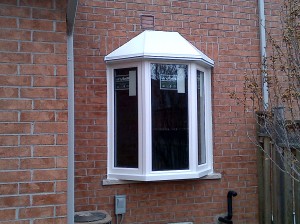 Is it that time again already; where did the last 15 years go?! If that’s what you’ve been thinking this year, you’re not alone. Every year thousands of Canadians invest in a window replacement project, whether it be new vinyl windows or windows made from another material. And as a home improvement that requires a significant financial outlay, it’s understandable that you want to get the best possible product for your money. To do that you need to look at it from all angles and find a solution that marries appropriate aesthetics with efficient performance and acceptable cost. If you manage to do that, not only will your home look great from the outside, but it’ll feel great on the inside. We’re going to look at one of the factors that can heavily influence energy efficiency in this post – window style.
Is it that time again already; where did the last 15 years go?! If that’s what you’ve been thinking this year, you’re not alone. Every year thousands of Canadians invest in a window replacement project, whether it be new vinyl windows or windows made from another material. And as a home improvement that requires a significant financial outlay, it’s understandable that you want to get the best possible product for your money. To do that you need to look at it from all angles and find a solution that marries appropriate aesthetics with efficient performance and acceptable cost. If you manage to do that, not only will your home look great from the outside, but it’ll feel great on the inside. We’re going to look at one of the factors that can heavily influence energy efficiency in this post – window style.
Window Replacement Styles: They’re Not All the Same
There are many, many styles of windows and while they all service the same fundamental purpose, they function in different ways. Some have a greater range of motion than others, while there are numerous opening and closing systems that exist. These factors can affect cosmetics, safety and, most importantly, energy efficiency. Keep reading to see a run-through of some of the most commonly installed window replacement styles.
- Casement – This type of window features hinges on one side and swings outwards when being opened. The fact that the window is pulled tight to the frame when it is closed means that there’s very little air leakage and the energy efficiency of this option is therefore very good.
- Awning – The way this type of window opens and closes (i.e. being pulled towards the frame in order to shut) is similar to a casement window, but there’s one major difference; the hinges are at the top of the window rather than the side.
- Sliding – Rather than swinging outwards, this type of window slides parallel to the wall in order to open and close. While this is exceptionally useful if you’ve got a small property, since it ensures space is used efficiently, as the window sash is not pushed tight against the frame when closed, there is often some air leakage. This consequently lowers energy efficiency levels.
- Single or Double Hung – One of the most common window styles, but as they use the same technology as sliding windows (only they slide vertically rather than horizontally), there isn’t such a good air seal created, allowing more heat energy to escape.
- Fixed – If the right materials are chosen this is the most energy efficient option of them all, but not the most popular choice. “Why??” I hear you say. Well, as the window panes are fixed into place, it’s impossible to ventilate the room, which can be a real nuisance in the middle of summer!
For quality advice and even better windows, call Superior Home Improvements. We service the Toronto, Markham, Durham and Richmond Hill areas and have over three decades of experience.
